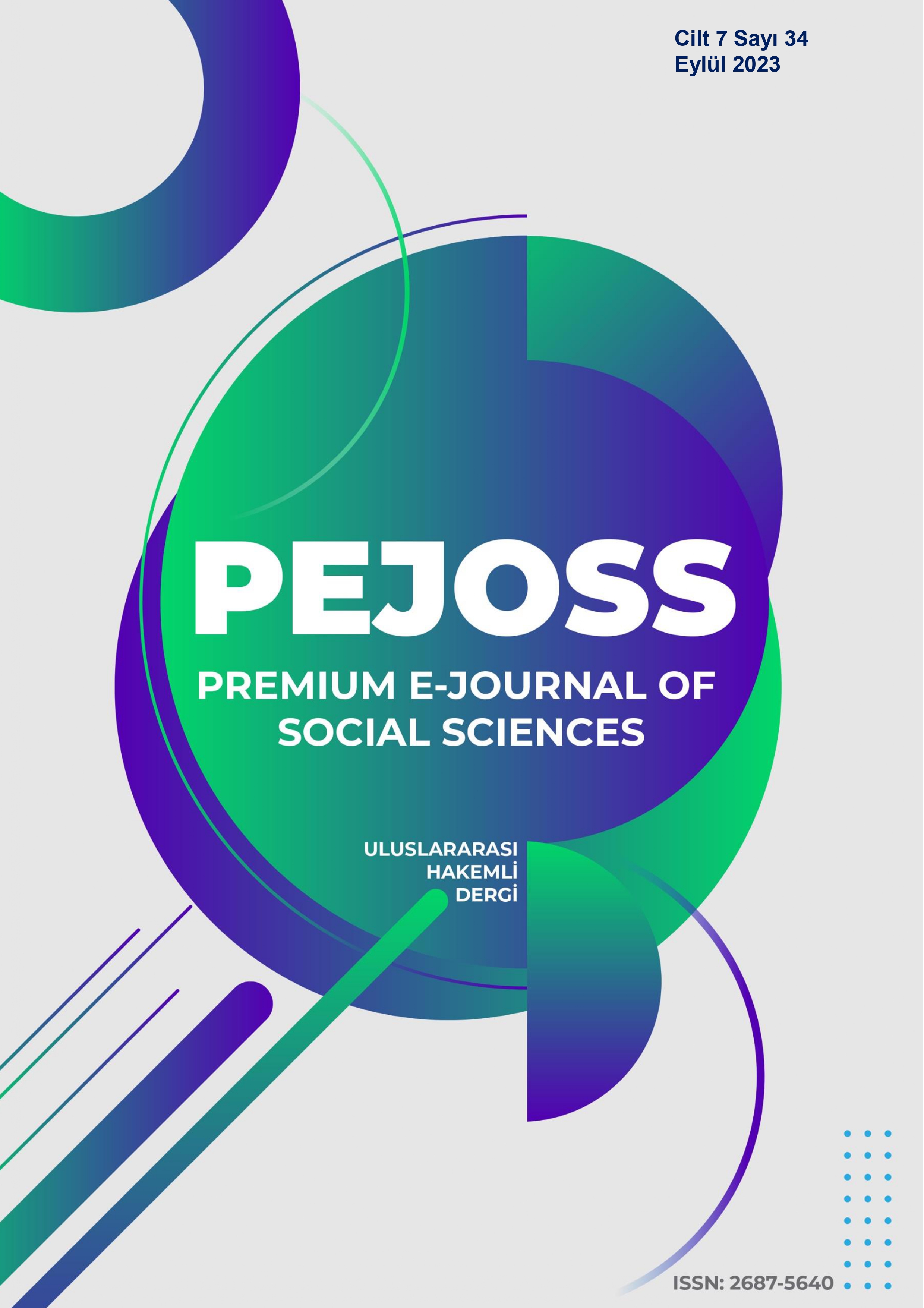Reflection of Body Identity Gender Policies on Art Practices in Turkey Between 1980-90 ‘Füsun Onur, Nur Koçak’
DOI:
https://doi.org/10.5281/zenodo.8404925Keywords:
Feminism, Identity Problem, Gender, Füsun Onur, Nur KoçakAbstract
From the 1980s to the present, the studies on feminist initiatives on behalf of gender equality in Turkey have sometimes gained momentum and sometimes hesitated due to political reservations. The reason why it has not been fully formed is due to the misinterpretation of the concept of equality, which leads to different thoughts and debates, or the fact that such an interpretation facilitates the work of patriarchal ideas. For example, conservative parts define this as women's desire to be the same as men. However, gender equality is not the effort of women to be the same as men, but it desire to have the same equal conditions with all their differences. There is no need to talk about the equality of things that are not different. Therefore, feminists have carried out a number of studies towards the end of hierarchical relations within equal opportunity by eliminating unjust power differences arising from gender identities. In this study, the studies of our Turkish female artists between 1980-1990, by doing studies on women and identity problems in many different channels, in order to women to become a subject rather than an object in the history of art, are discussed. Whether or not the female artists of the period adopted the concept of feminism, they reflected it in their own art practices, especially; with forms of expression such as conceptual art, pop art, space, installation and video. Most of the works have social content and have the quality of giving a message to society. In this study, the educational life and works of Füsun Onur and Nur Koçak, who put forward the concepts of body, identity and gender in the most striking expressions, were examined, and how they presented the same subjects in different styles was scrutinized.
Downloads
References
Antmen, A. (2008). Sanat Cinsiyet Sanat Tarihi Ve Feminist Eleştiri. İletişim Yayınları.
Baran, B. H. (2016). Kadın Özgürleşmesinde Bir Protesto Aracı Olarak Sanatın Kullanımı. [Yüksek lisans tezi]. SB Enstitüsü. Adnan Menderes Üniversitesi.
Davarcı, G. (2011). Sosyalist feminist kolektif arşiv. http://www.sosyalistfeministkolektif.org/: http://www.sosyalistfeministkolektif.org/web-yazilari/kitap-tan-t-mlar/sanat-cinsiyet-sanat-Tarihi-Ve-Feminist-Elestiri/
Elif, D. (2001,). Füsun onur’la buluşmak: bir sergi ve sanatçısıyla hemhâl olmak. artfulliving: https://www.artfulliving.com.tr/sanat/fusun-onurla-bulusmak-bir-sergi-ve-sanatcisiyla-hemhl-olmak-i-191
Ilgaz, T. (2018).Nur Koçak ve Yue Mınjun’un yapıtlarında toplumsal cinsiyet bağlamında erkek imgesi. sosyal bilimler dergisi, 5(27),251-263. https://doi.org/10.16990/SOBİDER.4457
Kapukaya, Z. (2020). Duygu Asena’nın “Kadının Adı Yok” romanı üzerinde bir inceleme. Akdeniz Kadın Çalışmaları ve Toplumsal Cinsiyet Dergisi 2(3),235. Doi:10.33708/ktc.664118
Koçak, N. (1984). Salt araştırma. https://archives.saltresearch.org/handle/123456789/36986
Koçak, N. (2019). Fetiş nesneler. Mutluluk resimlerimiz. T24 internet gazetesi. https://t24.com.tr/k24/ yazi/mutluluk-resimlerimiz,2414
Koçak, N. (t.y.). Doğal harikalar yada fetiş nesneler. Nur Koçak. Mine Sanat, Nur Koçak. minesanat: http://minesanat.com/sanatcilar/nur-kocak/ a
Onan, B. C. (2017, Nisan 09). Postmodern sanatta nesne ve mekan bağlamı: iki türk kadın sanatçı. Dergipark.org.tr.
Özayten, N. (t.y). Okuma atlası sanat. http://sanatokuma.blogspot.com/p/fusun-onur.
Resul, Ü. (2021, 1). 1960 sonrası fotogerçekçi eğilimler ve çağdaş türk resim sanatına etkileri International EUropean Journal of Managerial Research Dergisi, 4(7),79.
Varlı, G. (2010, Eylül 28). Üçüncü tiyatro ve türkiye'de kadın tiyatroları. [Yüksek lisans tezi] SB Enstitüsü. Ankara Üniversitesi.
Wikipedia. (2021, Nisan 29). https://tr.wikipedia.org/wiki/f%c3%bcsun_onur
Yıldırım, N. N. (2018, Mayıs 09). 1980-1990 yılları arası türk plastik sanatlarında feminizm yansımalarının dört kadın sanatçı üzerinden incelenmesi: Nur Koçak, Gülsün Karamustafa, Nil Yalter, Füsun Onur. [Lisans tezi]. Anadolu üniversitesi.
Yılmaz, A. N. (2009, ocak 01). türk heykelinde bir öncü sanatçı: Füsun Onur. Gazi sanat tasarım, 1(2),203-221
Zeynep, Ü. (2021). Nur Koçak ve vitrin resimleri. Uluslararası Hakemli İnsan ve Sanat Araştırmaları Dergisi, 449-460.
Downloads
Published
How to Cite
Issue
Section
License
Copyright (c) 2023 Premium e-Journal of Social Science (PEJOSS)

This work is licensed under a Creative Commons Attribution 4.0 International License.


